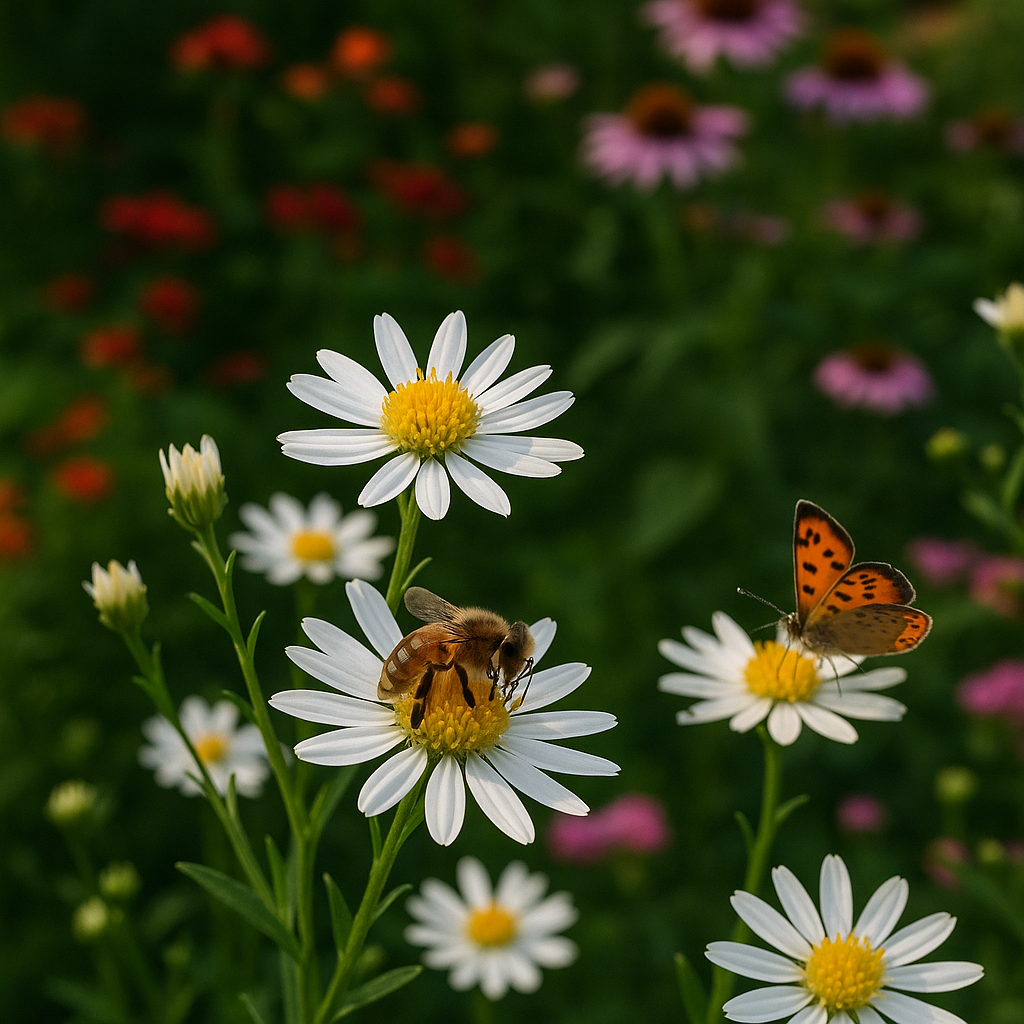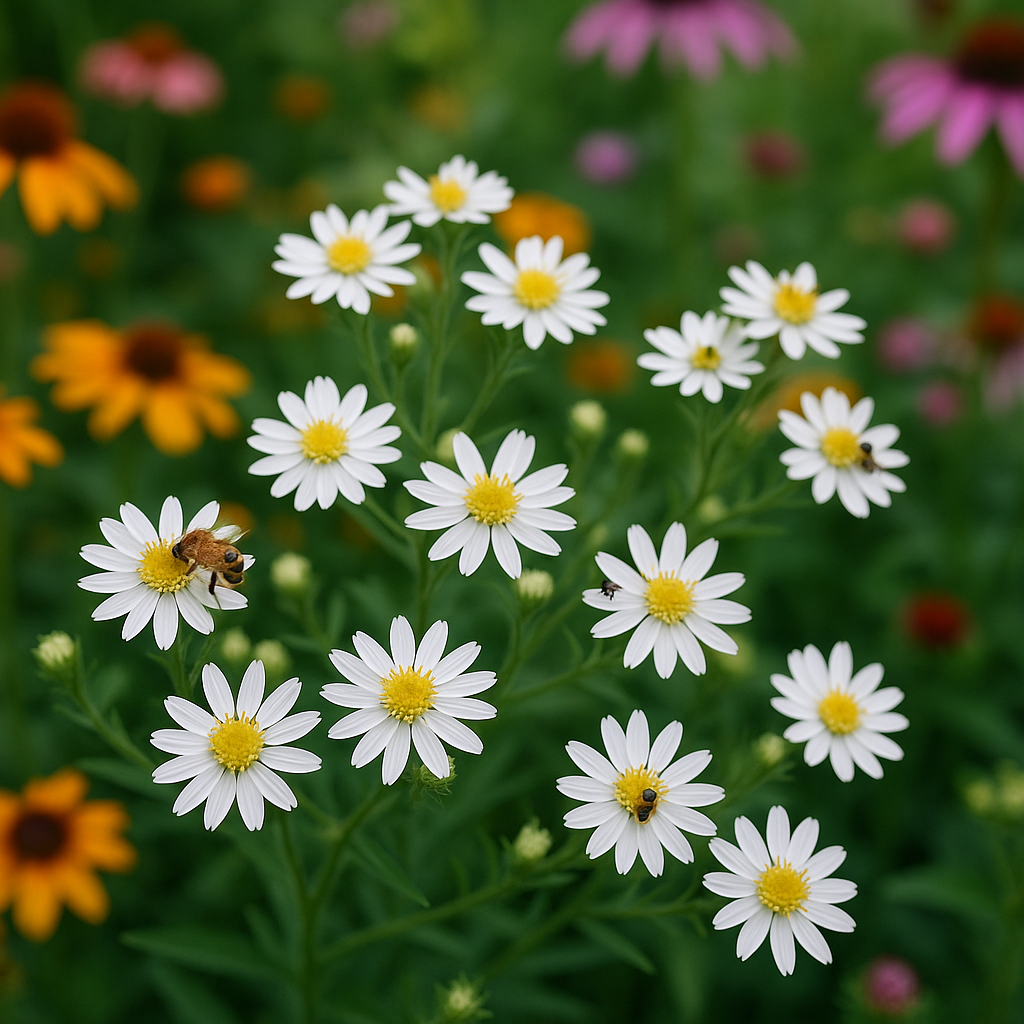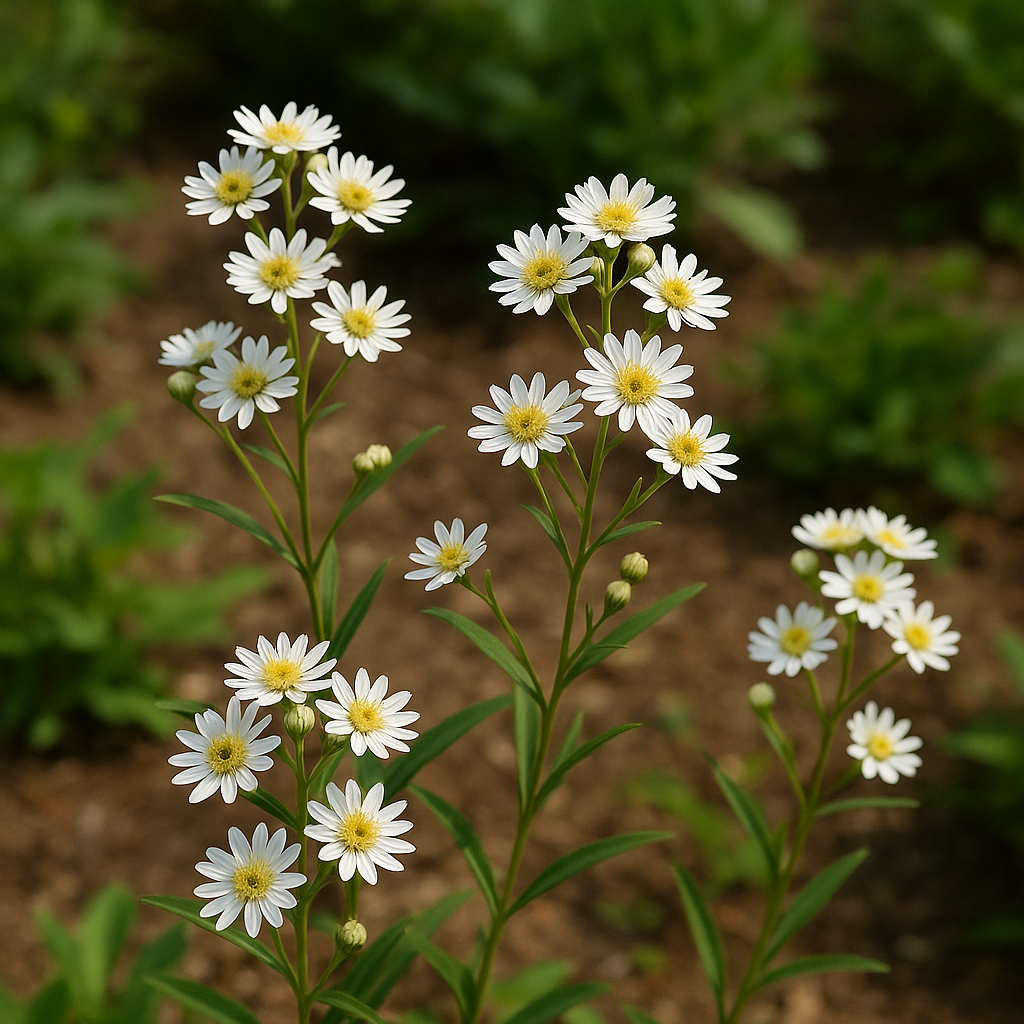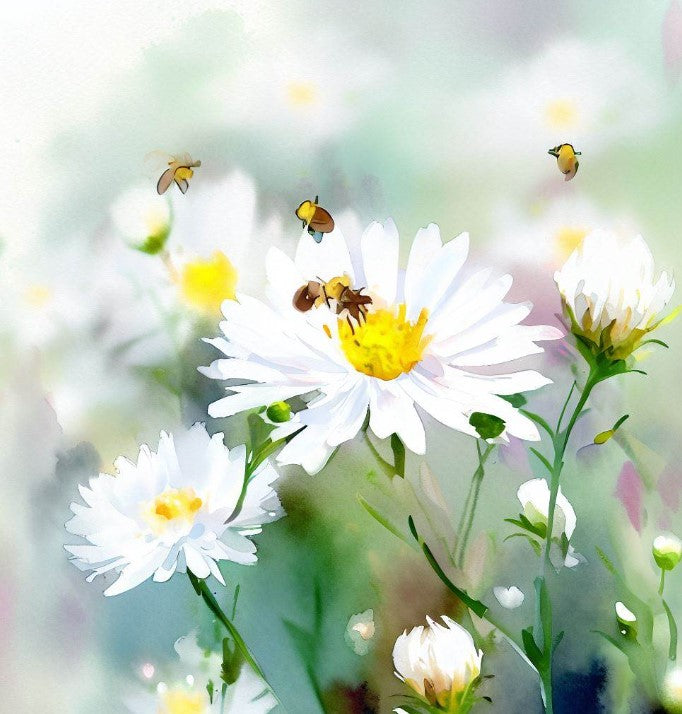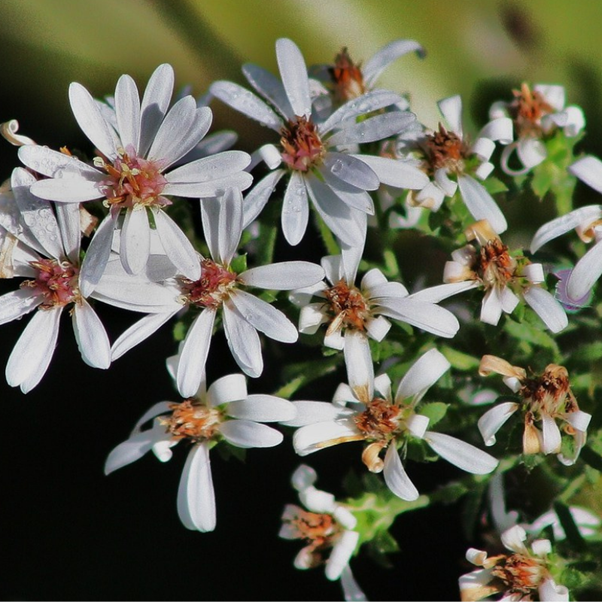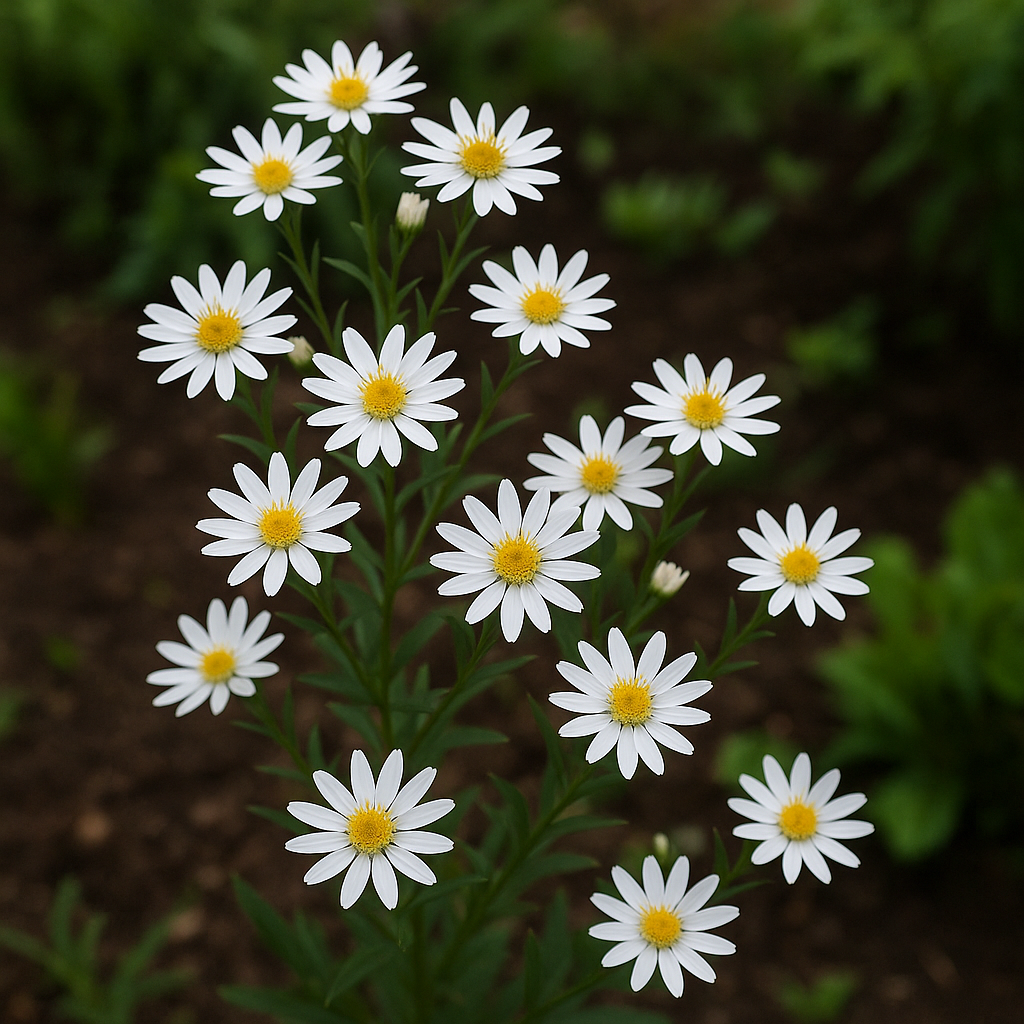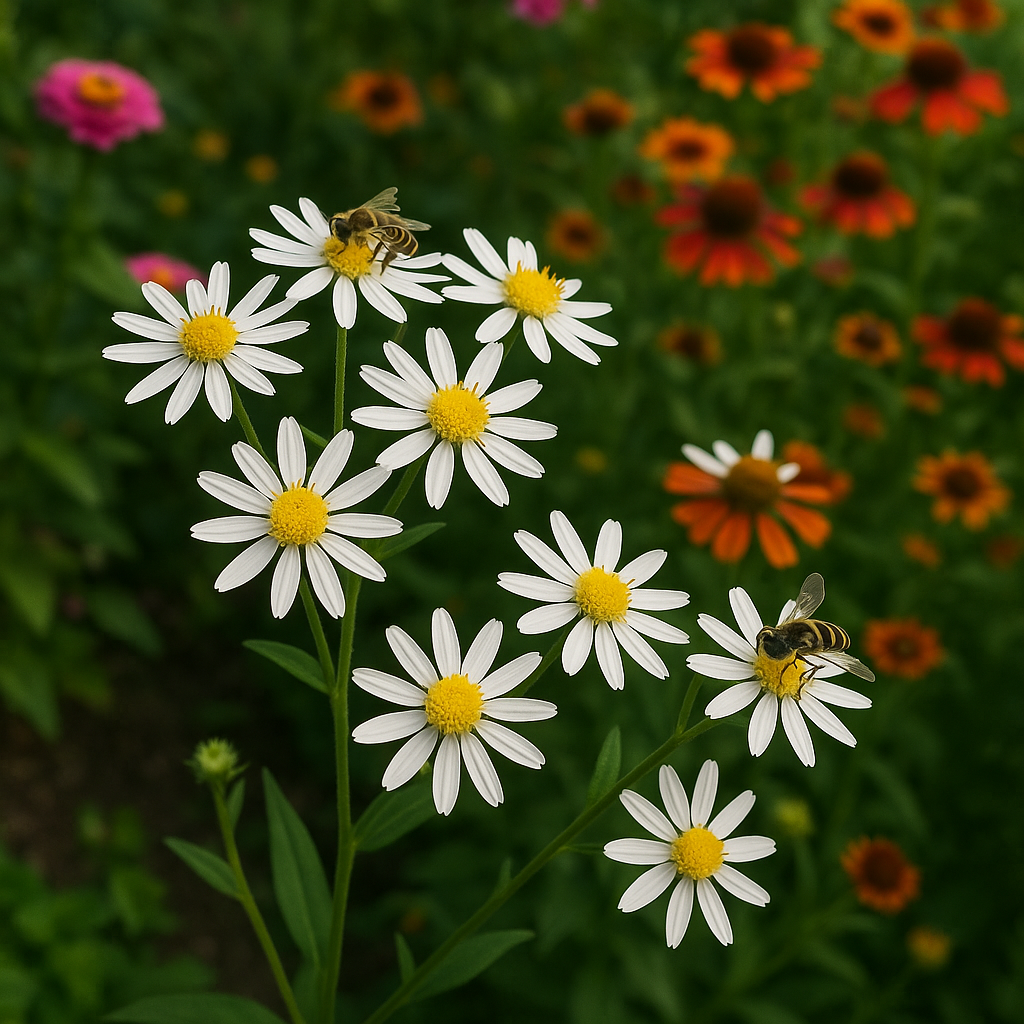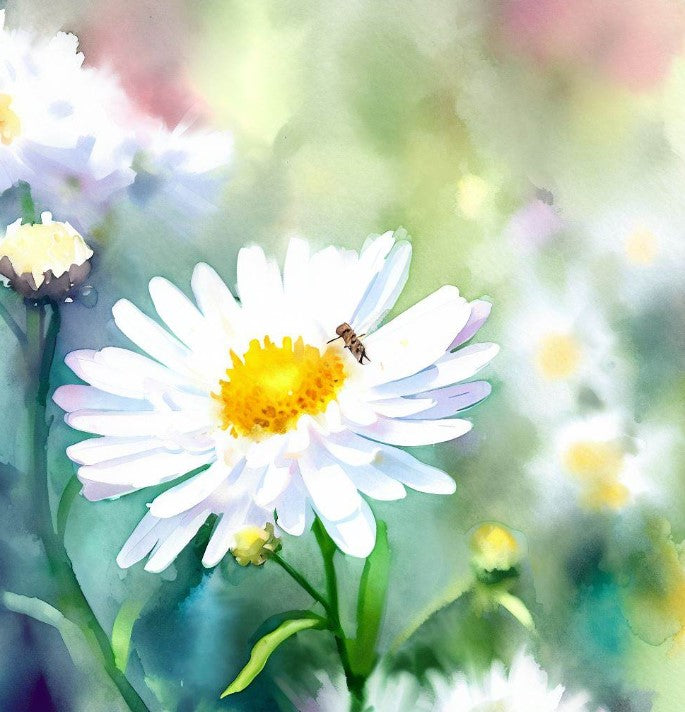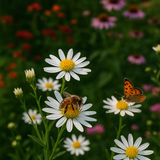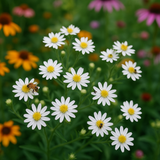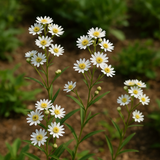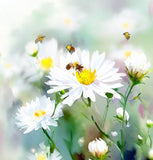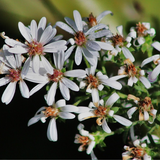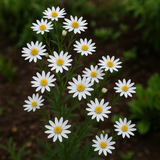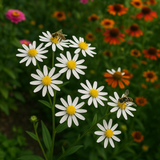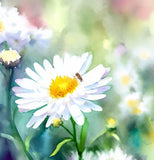ASTER ptarmicoides (OLIGONEURON album, Solidago ptarmicoides) (White Upland Aster)
ASTER ptarmicoides (White Upland Aster) is a species of herbaceous perennial plant native to North America. It typically grows up to 1 to 3 feet (0.3 to 0.9 meters) tall and 1 to 2 feet (0.3 to 0.6 meters) wide. The plant has a clumping habit, with numerous slender stems that are slightly hairy.
The elegant-looking showy white flower can be your garden’s fate if you pay special heed to the environment it requires. Native to Central North America, Aster Ptarmicoides is one of those unusual flowers that are hard to get hands on. Eminent for its fragrance, the flower possesses the ability to make you feel a heavenly environment. Used for gardens, walkways, if you decide to grab this extraordinary flower, butterflies will be your guests.
The leaves of White Upland Aster are narrow and lance-shaped, and are typically 2 to 6 inches (5 to 15 cm) long and 0.5 to 1 inch (1.3 to 2.5 cm) wide. They are covered in fine hairs, giving them a grayish-green appearance. The leaves are arranged alternately on the stem.
The flowers of White Upland Aster are produced in clusters at the end of the stems, with each cluster containing numerous small, daisy-like flowers. The flowers are typically white to pale pink in color, with yellow centers. They bloom in mid to late summer, and are an important nectar source for bees, butterflies, and other pollinators.
After the flowers have bloomed, White Upland Aster produces small, dry fruits called achenes, which are dispersed by the wind. The plant is adaptable to a range of soil types and prefers full sun to partial shade.
White Upland Aster is commonly used in native plant landscaping and restoration projects, as it is a hardy and attractive plant that provides important habitat and food for wildlife. It is often found in upland habitats such as prairies, meadows, and open woods. The plant is also used in traditional medicine for various ailments, including respiratory and digestive issues.
| Number of Seeds | Max Coverage Area (Square Ft.) | |
|---|---|---|
| 0.5OZ | 28,125 | 500 |
| 1OZ | 56,250 | 1,000 |
| 1/4LB | 225,000 | 4,000 |
| 1/2LB | 450,000 | 8,000 |
| 1LB | 900,000 | 16,000 |
| 5LB | 4,500,000 | 80,000 |
Scientific Name: Aster Ptarmicoides
Common Name: Upland White Aster
Plant Type: Perennial
Family: Asteraceae
Native Range: Central North America
Full Growth Height: 1-2 ft
Width in Across: 1-2 ft
Exposure: Full Sun
Blooming Season: Late Summer, Early Fall
Flower: Showy
Flower Color: White
Tolerate: Drought, Dry Soil
Water Requirement: Dry to Medium
Soil Type: Sand, Clay, Loam
Zones: 3-8
Uses: Attract Pollinators, Hunnybees, Butterflies, Cut Flowers

